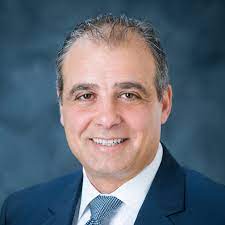The members of the PERS Board of Trustees announced that they will increase the employer – schools or other governmental entities – contribution from 15.75 percent of the payroll to 17.40%, effective July 1. State-supported agencies would be hit with an additional $75.2million due to this increase. Local school districts would be responsible for an additional $40 million. Most of this would normally come from state funds, but a small amount comes from local funds. The $25 million Teacher Pay Increase Gov. was approved by the Legislature. Local school districts could be further in debt if Phil Bryant, the proposal’s author, didn’t provide funding to cover the PERS rise. “It wouldn’t be the first time that the Legislature gave a teacher raise, but it did not provide sufficient funds to cover its cost,” stated Sen. Hob Bryan (D-Amory). Bryant’s budget proposal includes funds for both the teacher raise and the increase in PERS. The Legislative Budget Committee released the budget in December. It includes Lt. Gov. Both Tate Reeves and Speaker Philip Gunn, as well as other important legislators are not funded. These and other issues will be considered by legislative leaders during the 2019 legislative session that began in January. House Appropriations Chair Rep. John Read (R-Gautier) stated that funding the pension hike is something they are still working on. “That must be addressed.” Failure to include the pension increase’s cost in the final budget, due in March, would amount to a reduction in agency funding. If an agency is already funded at a level, then any increase in state pension payments would result in less money for other purposes. The cost to state agencies will be about $75 million. However, local governments will spend close to $25 million. The Legislature has not provided state funds for local governments to pay their pension costs. The state pension system covers approximately 325,000 former and current government employees. It is available to both local and state employees. According to the most recent numbers, PERS’ total assets are $26.5 billion. However, it is only 61 percent funded. This means it has 61% of the assets required to pay all benefits for the system’s employees, from new hires to retired. The program is $17 billion short of its full funding. Officials at PERS have stated that the program is financially sound, but the PERS Board’s goal is to fully fund the program by 2047. Pew Charitable Trust’s 2016 study found that Mississippi’s funding ratio was 40. According to the Pew study, employees and taxpayers would have to contribute an additional 4.6% of their payroll to cover the increased pension debt as well as the cost of new benefits. “Mississippi’s pension debt rose by $2 billion between 2015 and 2016.” PERS won’t have to pay all its debts (retiree benefit) anytime soon. It is expected that the funded ratio will increase over time, due in part to the increased employer contribution rate. Stock market dips could also have a short-term or long-term effect. Ray Higgins, a Georgian deputy commissioner of the Department of Early Care and Learning, took over the role of executive director of PERS in the summer. Long-serving executive director Pat Robertson retired. He was replaced by Ray Higgins. Robertson was the executive director for the last weeks of his tenure. The PERS Board decided to increase the contribution of governmental agencies to the payroll. This was a decision that was not popular with legislators, who didn’t want to be forced to pay more money to the state government. Higgins responded to questions from Mississippi Today and said that the current status of PERS was the result of: * A decreasing ratio of workers in the system to retirees * Rewarding additional benefits in late 1990s without paying them * Impacts of the great recession. There has not been any discussion about increasing workers’ contributions to the pension system which currently stands at 9 percent. According to a 2017 study, increasing members’ contributions rate may not be possible. Today’s members pay 9 percent of their income to their pension benefit, while the annual cost for their future benefit (i.e. the normal cost) only 10.47 percent. According to the report, this means that the employer pays 1.47 percent of the annual costs of providing retirement benefits for the services performed by members today.










